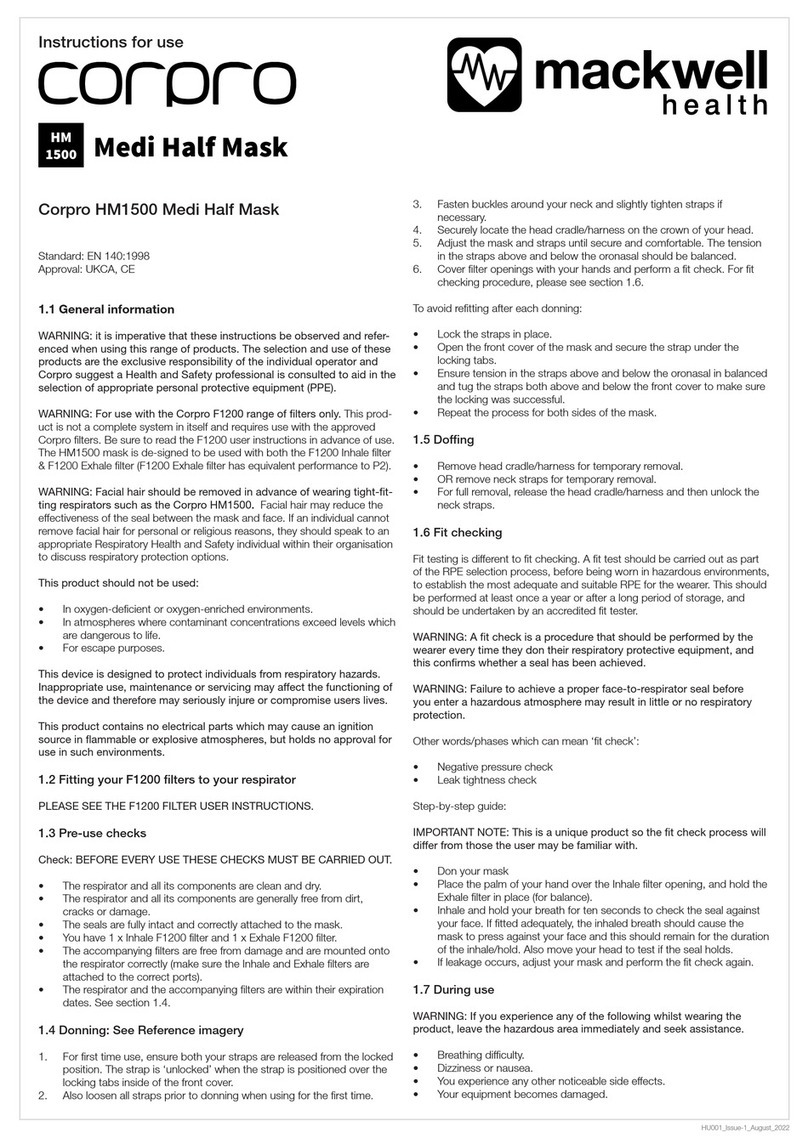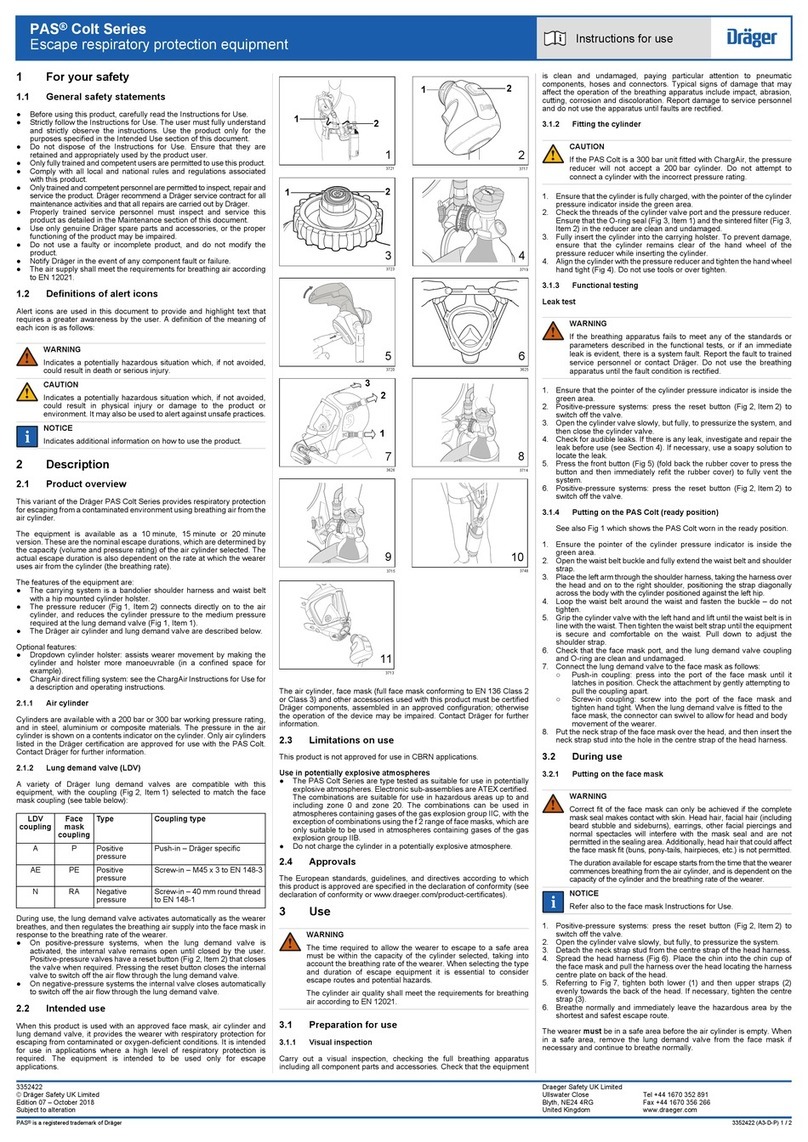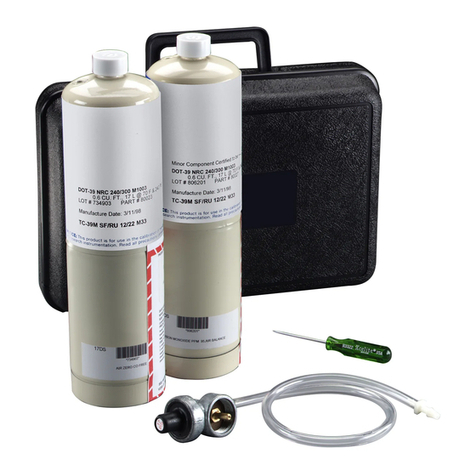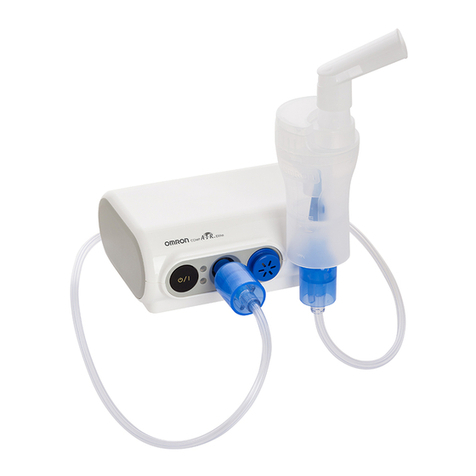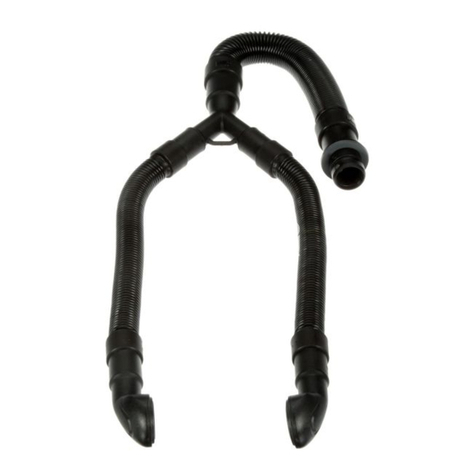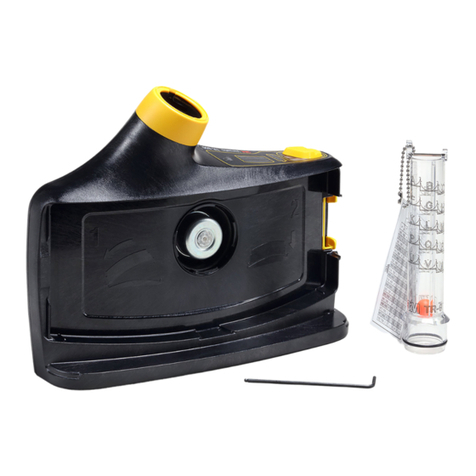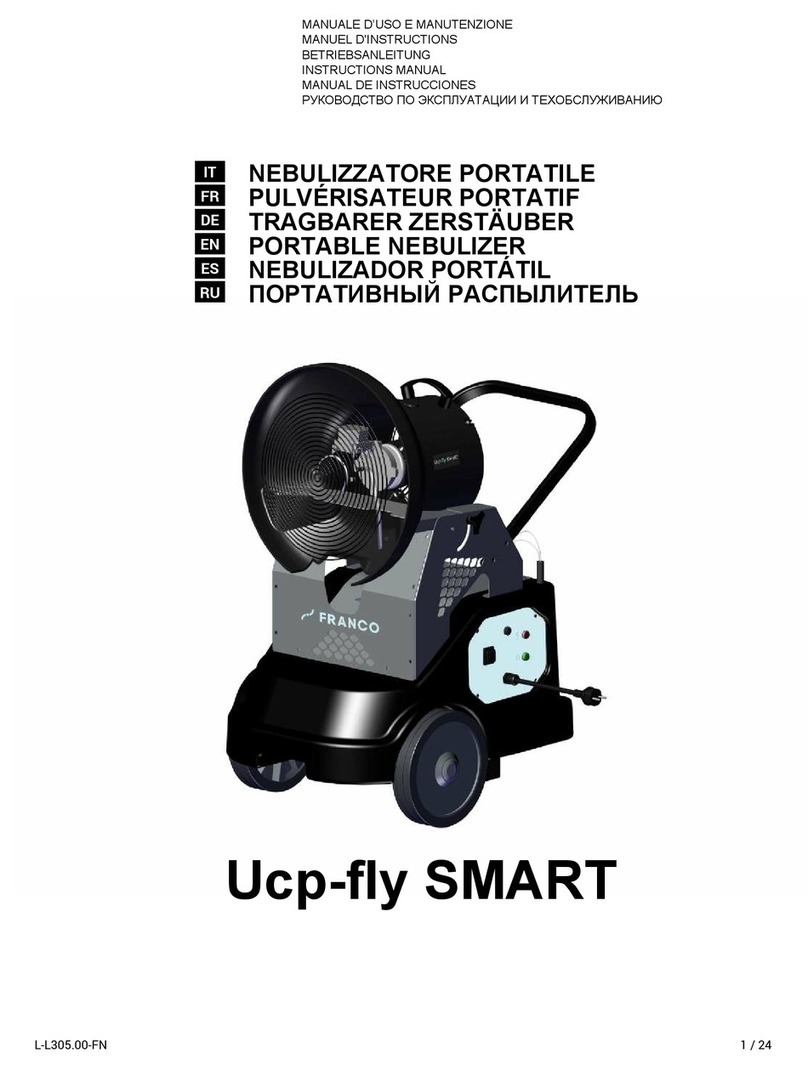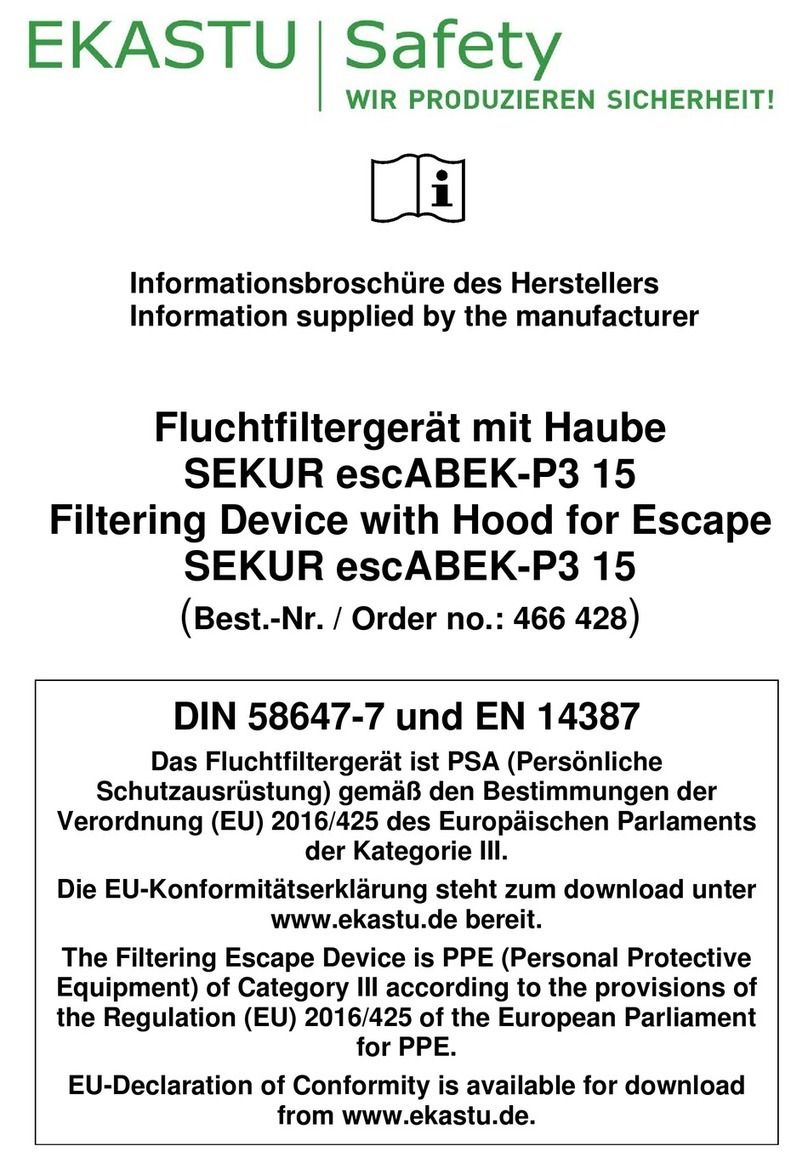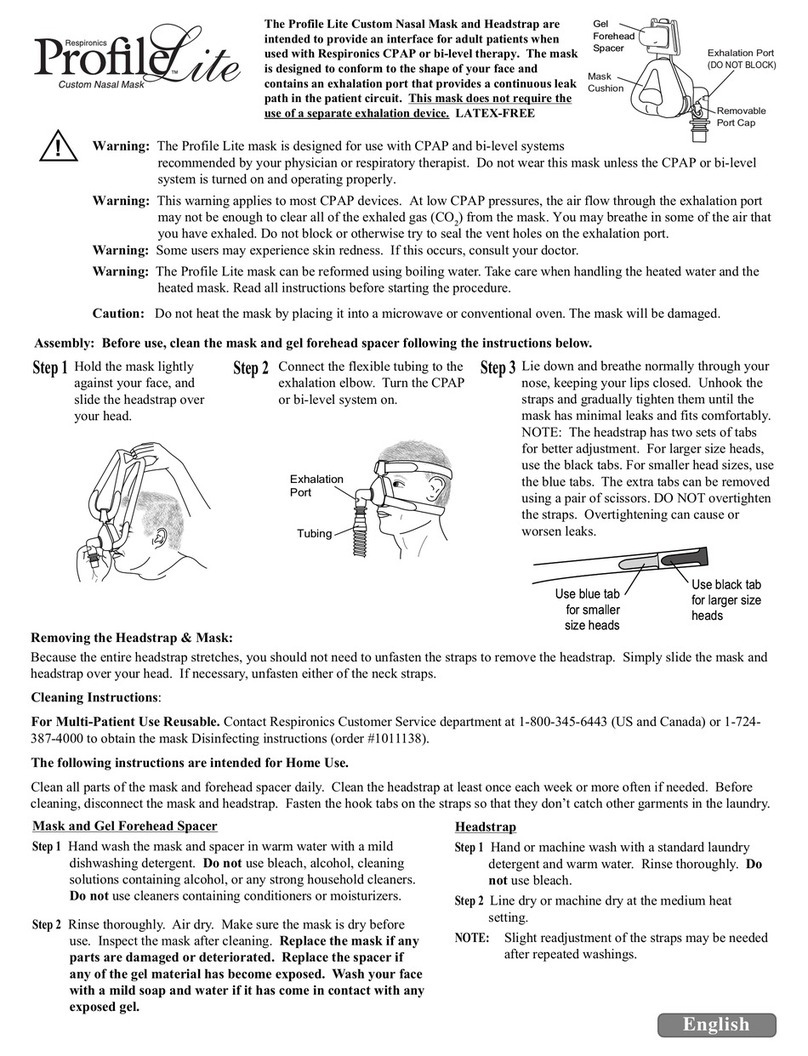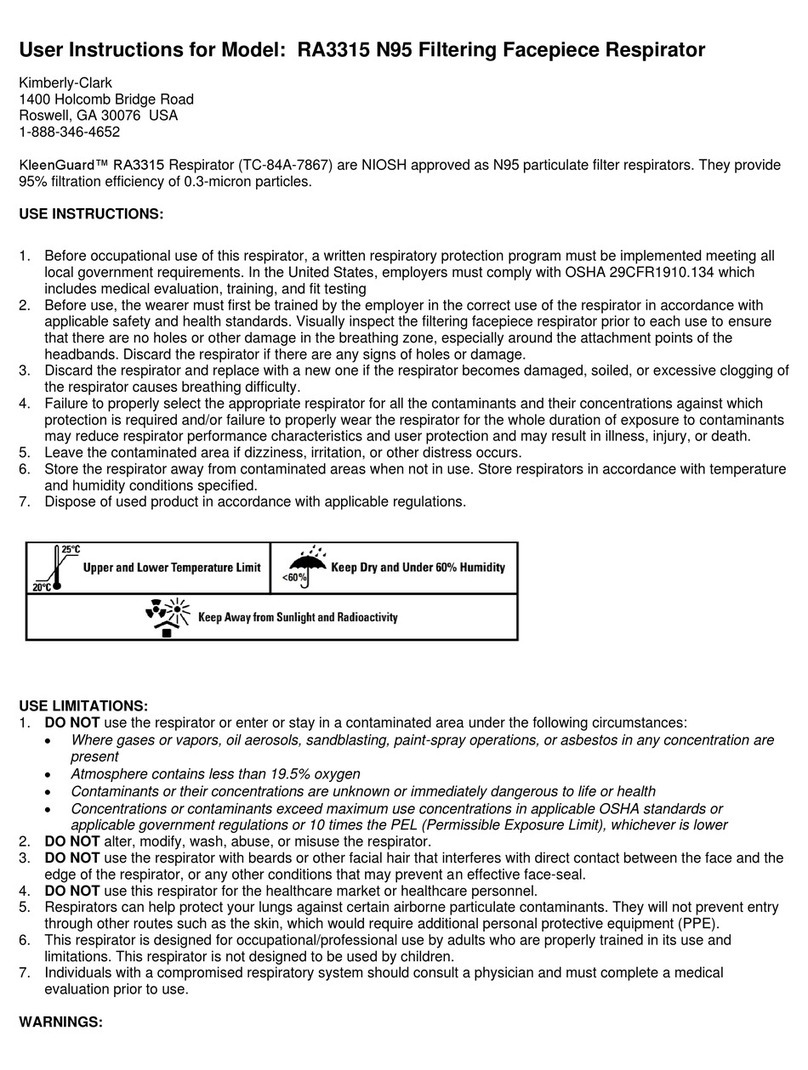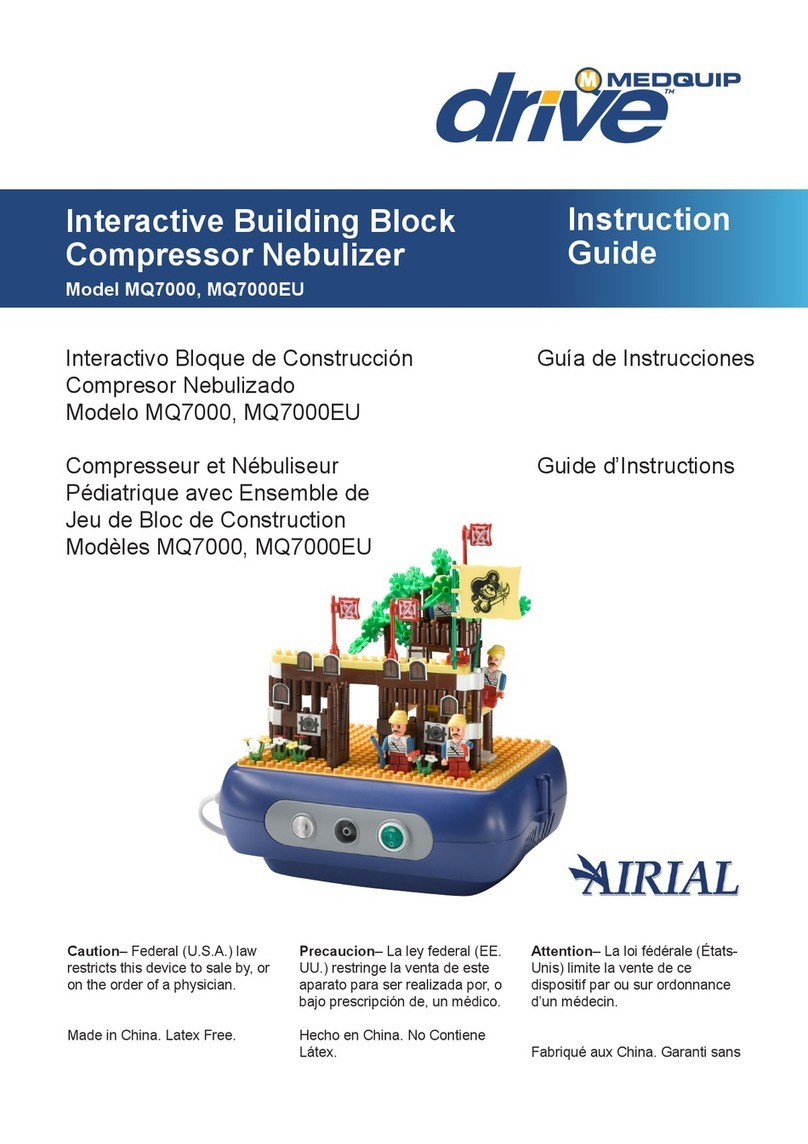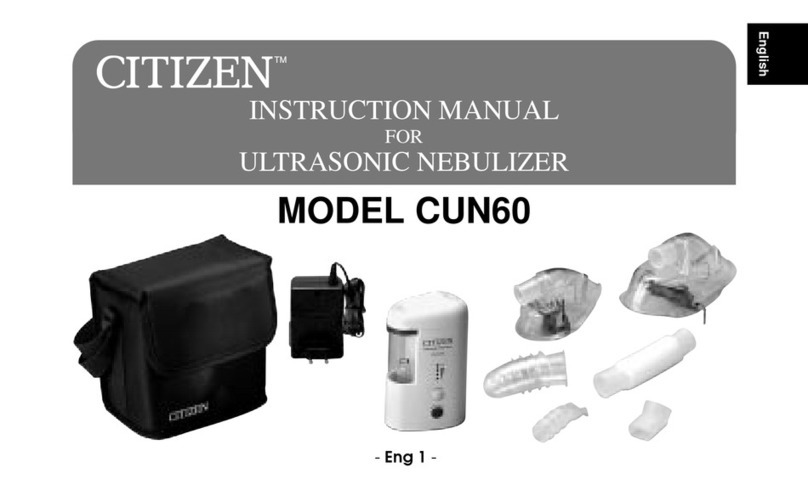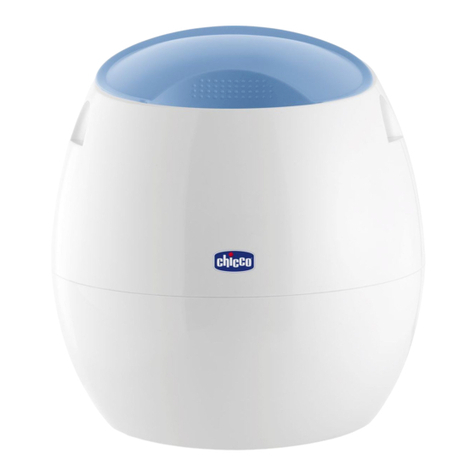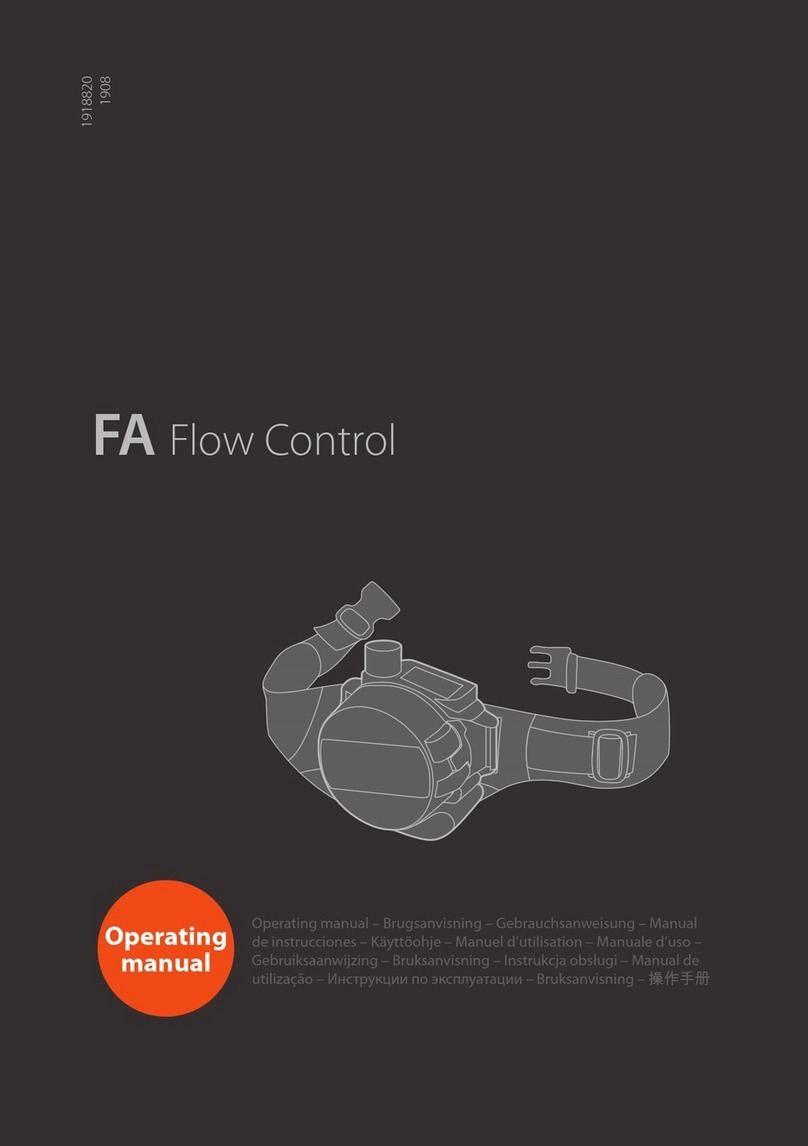Mackwell Corpro F1200 Inhale User manual

Corpro F1200 Inhale and F1200 Exhale Filters
Standard: EN 143:2021 P3 R in reference to F1200 Inhale Filter (F1200
Exhale filter is an accessory).
Approval: UKCA, CE (F1200 Inhale Filter)
1.1 General information
PLEASE READ AND RETAIN THESE INSTRUCTIONS. IT IS IMPERA-
TIVE THAT THESE INSTRUCTIONS BE OBSERVED AND REFERENCED
WHEN USING THIS RANGE OF PRODUCTS.
For use with the Corpro HM1500 Medi Half Mask only. To ensure the correct
usage of the product please read the HM1500 user instructions in advance
of use.
The F1200 Inhale filter protects the wearer from inhaling potentially harmful
particles, and the F1200 Exhale filter protects others from inhaling potentially
harmful particles exhaled by the wearer of the HM1500 Medi Half mask.
The F1200 filters consist of an inhalation filter (P3 filter type) and Exhalation
(P2 Equilavent filter type), meaning they are a high efficiency product which
are designed to filter particulates specifically. This includes micro-organisms
(such as viruses, bacteria, fungi and spores). The ‘R’ reference in ‘P3 R’
means that the particle filters are suitable for reuse against aerosols. The
F1200 Exhale filter is designed to be used as an accessory. The HM1500
mask is designed to be used with both F1200 Inhale filter and F1200 Exhale
filter.
1.2 Limitations of use
WARNING Do not use:
• In oxygen-deficient or oxygen-enriched environments.
• For tasks involving high-heat (e.g., fire fighting, work with any open
flame or molten metal).
• For escape purposes.
• For contaminants not covered by the filter labelling.
• With any other mask than the Corpro HM1500 Medi Half Mask.
WARNING The filtering device does not offer protection:
• For eyes or skin.
• Against gases and vapours.
• Against radioactive agents.
1.3 Before use
Check: BEFORE EVERY USE THESE CHECKS MUST BE CARRIED OUT.
• Only use the filters if the packaging is sealed/undamaged before first
use. Damaged or opened packaging will invalidate the expiry date and
may reduce the filters performance.
• Check the filters are clean and undamaged. Replace any filters that are
damaged.
• Ensure the filter is within it’s expiry date.
• Only use the filtering device where the environment, contamination and
concentration is known.
• Make sure the filters are appropriate for the intended use.
• When wearing the respirator and filters please perform a fit check prior
to entering any contaminated area. For more information please refer to
the HM1500 user instructions for full details.
1.4 Mounting
• Ensure you have suitable and adequate filters available for your
intended use. For correct usage the mask must include 1x Inhalation
filter and 1x Exhalation filter.
• Place the filter onto the mask and rotate clockwise.
• When correctly seated, and rotated clockwise, the filter will click into
place. The upper edge of the filter should be pointing towards the back
of the mask. Your filters will always lock and seal in the correct position
from any initial orientation.
• Repeat the process for both filters.
• Ensure filters are mounted parallel to the sealing surface and make
sure the front-facing filter arrows and mask arrows align. (As seen in
image 2). When viewed from the front the exhalation filter is located on
the right side of the mask, covering the exhalation valve.
1.5 Removing
Remove filters from the HM1500 by rotating in an the following
anti-clockwise direction. (See images 4,5)
Instructions for use
HU002_Issue-1_August_2022
In partnership with

1.6 Cleaning and disinfection
Ultimately, cleaning procedures, including cleaning frequency, depend on the
working environment and so this should be clarified based on organisational
risk assessments. However, general advice can be offered.
For thorough disinfection, it is advised to wipe the outside of the filters with
one of the following solutions:
• Antibacterial soap and warm water (~ 40°C).
• 10% bleach solution with water.
• 60% or over isopropanol alcohol (IPA) products.
• Hypochlorous acid products.
• Hydrogen peroxide solutions.
• Vapourised hydrogen peroxide (VHP).
• Equivalents to the above.
It is extremely important to ensure that none of the above solutions are
allowed to enter into the filter as this may lead to damage and loss of perfor-
mance. However, VHP may be used to clean the interior of the filter as this is
the only known decontaminate that does not effect filter performance. Once
cleaned with one of the above, rinse the outside of the filters with clean water
and leave to dry. Ensure products are allowed to dry before use or storage.
To ensure personal hygiene, health and product longevity, it is recommended
that the filters be cleaned at the end of each working shift or period of use.
Do not attempt to open the filters.
1.7 Storage
There may be required storage procedures depending on your working
environment. This should be confirmed with your organisational Respiratory
Health and Safety Officer. However, Corpro recommends the filters be stored
in a cool, dry and sterile / uncontaminated place. Corpro can offer rigid,
reusable storage containers if this is preferable (please contact us for more
information), but if not, somewhere safe and clean such as a disinfected
personal locker will be sufficient. The filters should be always cleaned before
storage, regardless of how long they may remain unused.No special trans-
port requirement other than what is stated in the storage recommendations.
Product to be transported within suitable packaging to provide protection.
1.8 Use and maintenance
It is important to maintain respiratory protective equipment as a whole to en-
sure that it remains in good working order for wearer safety. This includes the
filters. All filters have an expiration date which is stated on the label located
on the front of each filter. Do not use after the expiration date or if obviously
damaged. Regardless, filters should be changed regularly as part of main-
tenance. Both the F1200 Inhale and Exhale filters should be connected to
the HM1500 Medi Half Mask at the same time. Neither filter should be used
without the other. Both filters should ideally be changed at the same time
regardless if only one filter becomes damaged or unusable for any reason.
This will help to ensure better moderation and maintenance of the products.
It is recommended that the filters be changed every three months or if the
filters become clogged.(i.e. difficult to breathe through), whichever point is
reached sooner. This is based on the assumption that the user is breathing
through the filters for an average of 40 hours per week (8 hours per day) and
that the filters have been handled, maintained and stored adequately. Lon-
gevity of filters is also subject to the users individual breathing rate and level
of contaminant present. For more information regarding contamination please
contact your Health & Safety department.
1.9 Disposal
A risk assessment by your organisation will be required to establish the safest
disposal method for the F1200 range of filters. However, as a guide Corpro
can provide recommendations.
In terms of recycling, there are a few considerations:
• The cartridges are constructed from acrylonitrile butadiene styrene
(ABS) plastic and so can be recycled. Before recycling please ensure
that the filter cartridge is thoroughly disinfected/decontaminated.
• For the internal elements of the filters, the materials may have been
exposed to a range of potentially harmful particulates and so it is
unlikely that these elements can be readily recycled. However, it may be
possible to engage third-parties who specialise in the disposal of such
items.
Certications
CE:
The F1200 Inhale Filter has been designed to conform to EN 143:2021. EU
Regulation 2016/425 Type-Examination (Module B) Certified by BSI Group
the Netherlands B.V., Say Building, John M Keynesplein 9, Amsterdam, The
Netherlands, NB 2797 who are also responsable for the ongoing quality
surveillance Module D. Declaration of Conformity available at: www.corpro.
systems
UKCA:
The F1200 has been designed to conform with EN 143:2021. Regulation
2016/425 on personal protective equipment as amended to apply in GB
Type-Examination (Module B) Certified by BSI Assurance UK Ltd, Kitemark
Court, Davy Avenue, Knowlhill, Milton Keynes, MK5 8PP, United Kingdom,
AB 0086, who are also responsible for the ongoing quality surveillance Mod-
ule D. Declaration of Conformity available at: www.corpro.systems
F1200 Exhale Filter provides equivalent performance to EN143:2021
HU002_Issue-1_August_2022
• Depending on your working environment, you may not be able to recycle
any materials as the filters may be classed as hazardous waste. This would
need to be clarified with your Health, Safety and Environmental department,
if classed as hazardous waste please ensure that all appropriate disposal
methods are followed.
• If the filters are not classed as hazardous waste and recycling protocols
have been evaluated, the product should be disposed of or recycled as
applicable in a controlled waste area at the occupational site or via an
approved third party.
Patented: GB 2511996, EP 3077062, EP(SE) 3077062, EP(NL) 3077062,
EP(IT) 3077062, EP(GB) 307762, EP(FR) 307762, EP(ES) 3077062 & DE
2014 010 163.1. Patents applied for: US 20170021201, CA 2931782,
AU 2014358910, BR 11 2016 012 657 2, CN 201480066145.X, IN
201617018016, KR 20160133406 & ZA 2016/03472.
Head Ofce: Mackwell Health
Vigo Place, Aldridge, Walsall,
WS9 8UG, marketing@
mackwellhealth.com,
www.mackwellhealth.com,
+44 (0)1922 458255
The Filter Design Company Ltd,
1A Milleld Lane, Haydock,
St.Helens, Merseyside, United
Kingdom WA11 9TW,
+44 (0) 1942 597267
In partnership with
Official manufacturer user instructions held within the product packaging.
Please see manufacturer’s user instructions for most up-to-date guidance.
This manual suits for next models
1
Other Mackwell Respiratory Product manuals
